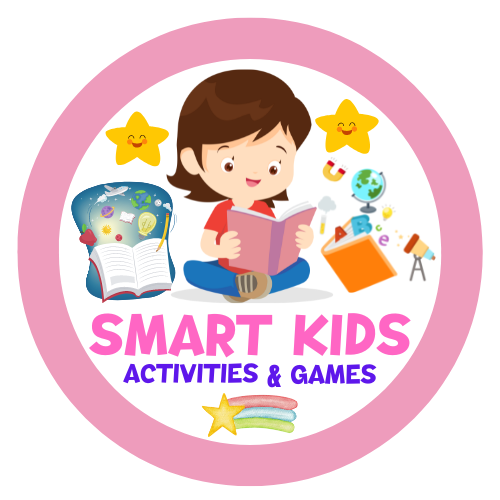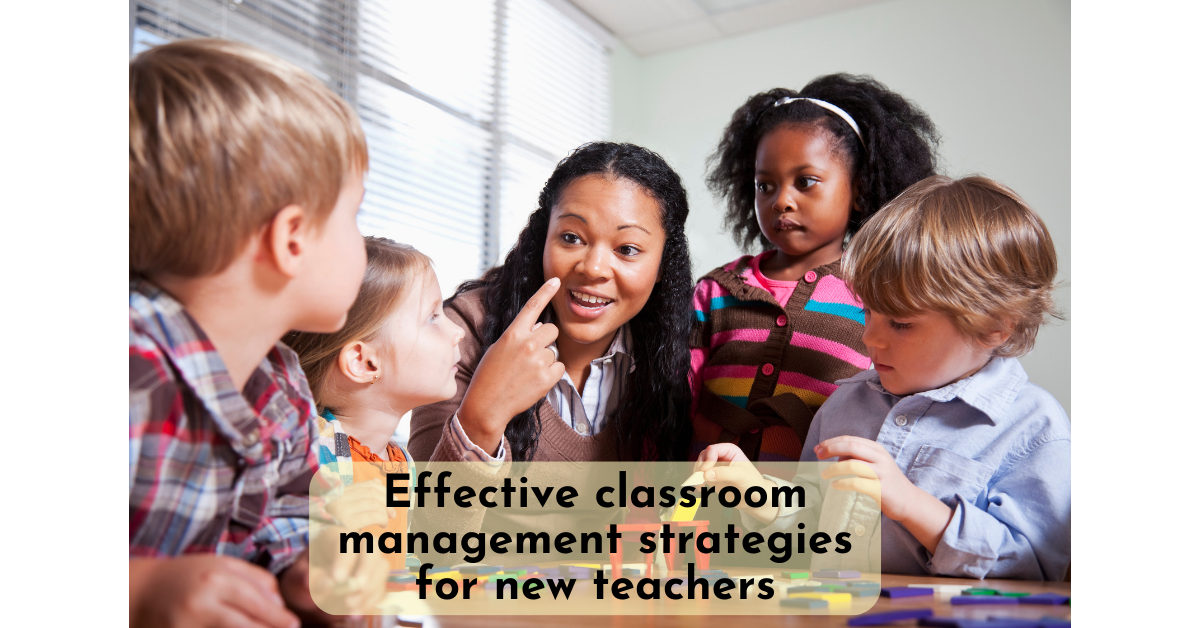Key Takeaways:
- Implementing effective classroom management strategies is crucial for new teachers.
- Positive behavior reinforcement helps create a positive learning environment.
- Establishing clear rules and routines provides structure and expectations for students.
- Building strong teacher-student relationships fosters engagement and trust.
- Proactive behavior management strategies are essential in creating a conducive learning environment.
The Importance of Research and Preparation
Effective classroom management strategies for new teachers can greatly benefit from thorough research and preparation before starting a teaching job. By taking the time to understand the school culture, communicate with parents, and track student progress, teachers can better tailor their classroom management techniques to meet the specific needs of their students and school community.Understanding the School Culture
Researching and familiarizing oneself with the school culture is essential for new teachers. Each school has its own unique set of values, expectations, and student demographics. By understanding the school culture, teachers can align their classroom management strategies with the overall vision and mission of the school, ensuring a cohesive and supportive learning environment for students.Communication with Parents
Effective communication with parents is crucial for successful classroom management. Building positive relationships with parents helps create a strong support system for students and fosters a sense of collaboration between home and school. By regularly updating parents on student progress, sharing classroom expectations and policies, and addressing any concerns or questions, teachers can establish open lines of communication that contribute to a positive learning environment.Student Progress Tracking
Tracking student progress is an important aspect of effective classroom management. By regularly monitoring and assessing student performance, teachers can identify areas of strength and areas that may require additional support or intervention. This enables teachers to provide targeted instruction and implement appropriate classroom management strategies that address the specific needs of their students, leading to improved academic outcomes.| Benefits of Research and Preparation | Actions for New Teachers |
|---|---|
| Align classroom management strategies with school culture | Conduct research on the school’s mission, values, and student demographics |
| Establish strong partnerships with parents | Regularly communicate with parents, share expectations, and address concerns |
| Adapt classroom management strategies to meet student needs | Track student progress, identify areas of strength and areas requiring additional support |
Modeling Positive Examples as a Teaching Identity
Developing a strong teaching identity is crucial for new teachers as they navigate the challenges of classroom management. One effective strategy is to model positive behavior, which sets the tone for a positive learning environment. By demonstrating kindness, respect, and empathy, teachers can inspire their students to exhibit the same qualities. Authenticity plays a key role in developing a teaching identity. It is essential for teachers to be genuine and true to themselves in their interactions with students. This helps build trust and fosters a sense of belonging within the classroom. Students are more likely to engage and be receptive to instruction when they perceive their teacher as authentic and relatable. Objectivity and consistency are also important aspects of a teacher’s identity. By maintaining objectivity, teachers can assess and address student behavior in a fair and impartial manner. Consistency in actions and expectations establishes predictability in the classroom and helps students understand the rules and boundaries. When teachers consistently model positive behavior and enforce expectations equitably, students are more likely to internalize these standards and apply them independently.Benefits of Modeling Positive Behavior:
- Promotes a positive learning environment
- Builds trust and rapport with students
- Encourages students to exhibit positive behavior
- Develops a sense of belonging and community
- Enhances student engagement and motivation
| Modeling Positive Examples as a Teaching Identity: |
|---|
| Benefits |
| Promotes a positive learning environment |
| Builds trust and rapport with students |
| Encourages students to exhibit positive behavior |
| Develops a sense of belonging and community |
| Enhances student engagement and motivation |
Establishing Clear and Fair Rules
When it comes to effective classroom management strategies for new teachers, one of the most important aspects is establishing clear and fair rules. This not only helps maintain order and discipline but also promotes a positive learning environment where students feel safe and valued. By setting clear expectations from the beginning, new teachers can ensure that students understand what is expected of them and the consequences of their actions. This helps establish teacher authority and allows for a structured and organized classroom environment. However, it’s crucial to ensure that these rules are fair and reasonable, taking into consideration the individual needs and circumstances of each student. Teacher leadership skills play a vital role in effectively establishing and enforcing classroom rules. By displaying confidence and assertiveness, new teachers can gain the respect and cooperation of their students. It’s important to strike a balance between being firm and approachable, creating a classroom atmosphere that encourages open communication and mutual respect.| Benefits of Establishing Clear and Fair Rules | Strategies for Effective Rule Implementation |
|---|---|
|
|
Balancing Support and Authority
Building strong teacher-student relationships is a vital aspect of effective classroom management strategies for new teachers. It involves finding the right balance between support and authority. While it is essential to be supportive and caring towards students, it is equally important to maintain a sense of authority to establish a structured learning environment. This balance creates a positive classroom atmosphere where students feel safe, respected, and motivated to succeed. One of the key considerations when balancing support and authority is understanding the difference between friendship and authority. As a teacher, it is crucial to build positive relationships with students based on trust and respect. However, it is equally important to maintain professional boundaries and avoid blurring the lines between friendship and authority. By setting clear expectations and consistently enforcing rules, teachers can create a sense of accountability while still fostering a supportive and nurturing classroom environment.Table: Balancing Support and Authority in the Classroom
| Support | Authority |
|---|---|
| Providing individualized attention and support to struggling students | Setting clear boundaries and expectations for behavior |
| Offering guidance and encouragement to promote student growth and development | Establishing consequences for inappropriate behavior and consistently enforcing them |
| Creating a safe and inclusive classroom environment where students feel valued | Using a firm and confident tone to command attention and maintain order |
| Building positive teacher-student relationships based on trust and mutual respect | Modeling professionalism and taking charge of classroom activities |
Rewarding Positive Behavior and Avoiding Punishment
In the realm of effective classroom management strategies for new teachers, one key aspect is rewarding positive behavior. Positive reinforcement is an essential tool for encouraging and reinforcing desired behaviors in students. By recognizing and acknowledging their achievements and efforts, teachers can create a positive and motivating learning environment. Operant conditioning, a principle discovered by psychologist B.F. Skinner, forms the foundation of positive reinforcement. According to this theory, behavior that is followed by a positive consequence is more likely to be repeated. In the classroom, this means that when students exhibit positive behavior, such as completing assignments on time, participating actively in discussions, or demonstrating good manners, they should be rewarded. This can be done through verbal praise, certificates, small incentives, or other forms of recognition.“Rewarding positive behavior through praise and incentives is an effective strategy for reinforcing desired behaviors.”Avoiding punishment is equally crucial in maintaining a positive classroom environment. While it is important to address misbehavior and set clear boundaries, punishment should be used sparingly and as a last resort. Research has shown that punitive measures can have negative effects on students, such as decreased motivation, increased aggression, and damaged teacher-student relationships. Instead, teachers should focus on prevention, proactive behavior management techniques, and redirection to address challenging behaviors before they escalate.
| Rewards | Punishment |
|---|---|
|
|
Consequences
Consequences play an essential role in classroom management. It is important for students to understand the consequences of their actions, both positive and negative. By implementing clear and consistent consequences, teachers can help students develop a sense of responsibility and accountability. Positive consequences can include rewards, privileges, or extra free time, while negative consequences may involve loss of privileges or extra work. It is crucial to ensure that consequences are age-appropriate, fair, and related to the behavior in question. Additionally, teachers should always communicate the rationale behind the consequences to students, emphasizing the objective and educational aspect of the disciplinary process. In summary, effective classroom management for new teachers requires a balance between positive reinforcement and fair consequences. By rewarding positive behavior, avoiding excessive punishment, and implementing consistent consequences, teachers can create a supportive and engaging learning environment for their students.Encouraging Critical Thinking and Initiative
Encouraging critical thinking and initiative in students is a vital aspect of effective classroom management for new teachers. By nurturing these skills, educators can foster independent thinking, enhance problem-solving abilities, and empower students to take ownership of their learning. Employing various teaching methods and evaluation strategies can promote critical thinking and initiative in the classroom.Fostering Critical Thinking
One way to encourage critical thinking is by incorporating open-ended questions into lesson plans. These questions are designed to stimulate students’ analytical thinking and require them to evaluate information, draw conclusions, and articulate their thoughts. Additionally, encouraging collaboration and group discussions can challenge students’ perspectives and help them consider different viewpoints.Empowering Student Initiative
Empowering students to take initiative involves creating an environment that supports exploration and innovation. Teachers can achieve this by incorporating project-based learning activities that allow students to investigate real-world problems, generate ideas, and design their solutions. Providing students with opportunities to make decisions, such as choosing their topics for assignments or setting goals for their learning, can also foster a sense of ownership and motivation.| Evaluation Strategies | Benefits |
|---|---|
| Performance-based assessments | Allows students to demonstrate their understanding through practical application |
| Self-assessment and reflection | Encourages students to evaluate their progress, strengths, and areas for improvement |
| Peer feedback and evaluation | Promotes collaboration and helps students develop communication and critical thinking skills |
Celebrating Effort and Fostering a Growth Mindset
One of the key classroom management strategies for new teachers is to celebrate effort and foster a growth mindset. By shifting the focus from purely results-oriented to acknowledging and appreciating the hard work and dedication that students put into their learning, teachers can empower their students and create a positive classroom environment. “The view you adopt for yourself profoundly affects the way you lead your life,” said Carol Dweck, renowned psychologist and advocate of the growth mindset. Embracing Dweck’s philosophy, teachers can encourage their students to believe in their ability to grow and improve through effort and perseverance. By celebrating the effort students put into their work, rather than solely focusing on the outcomes, teachers inspire students to take risks, embrace challenges, and see mistakes as opportunities for learning and growth.“It’s not that I’m so smart, it’s just that I stay with problems longer,” – Albert EinsteinPositive reinforcement plays a significant role in fostering a growth mindset. When teachers recognize and praise students’ effort, progress, and determination, they cultivate a sense of self-efficacy and resilience. This not only motivates students to continue striving for success but also helps build their confidence and belief in their own abilities. By celebrating effort over results, teachers create a classroom culture that values the learning process and promotes a love for learning.
Fostering a Growth Mindset in the Classroom
Here are some practical strategies for celebrating effort and fostering a growth mindset:- Provide specific and timely feedback that acknowledges the effort and progress made by students.
- Encourage students to reflect on their learning journey and set goals for improvement.
- Share stories of famous individuals who have overcome obstacles and achieved success through perseverance and hard work.
- Normalize mistakes and emphasize the importance of learning from them.
- Create an inclusive and supportive classroom environment where students feel safe to take risks and share their ideas.
| Benefits of Celebrating Effort and Fostering a Growth Mindset | How to Implement |
|---|---|
|
|
Techniques for Mastering Classroom Management
When it comes to mastering classroom management, new teachers can employ various effective strategies. By implementing these techniques, they can create a positive and engaging learning environment for their students. Let’s explore some key techniques that can help new teachers navigate the challenges of classroom management.Involving Students in Joint Rule Development
One powerful technique is to involve students in the development of classroom rules. When students have a say in establishing the rules, they feel a sense of ownership and are more likely to adhere to them. This approach fosters a collaborative and respectful classroom environment, where students understand the reasons behind the rules and have a sense of responsibility.Providing Decision-Making Autonomy
Granting students decision-making autonomy can empower them and foster a sense of independence. Teachers can offer choices within certain parameters, allowing students to make decisions about their learning and behavior. This technique promotes student engagement and encourages active participation in the learning process.Using Active Learning Methods and Promoting Social Interaction
Active learning methods, such as group work, discussions, and hands-on activities, can enhance student engagement and facilitate a deeper understanding of the content. By promoting social interaction, teachers create opportunities for collaboration, teamwork, and peer learning. These techniques not only improve classroom management but also enhance students’ overall learning experience.Implementing Positive Reinforcement
Positive reinforcement is a powerful technique for encouraging desired behavior in the classroom. By recognizing and rewarding students’ efforts and achievements, teachers can create a positive and supportive classroom environment. Whether it’s verbal praise, small incentives, or a system of rewards, positive reinforcement motivates students to stay engaged and maintain good behavior. Employing these techniques can help new teachers build a solid foundation for effective classroom management. By involving students in the rule-making process, providing decision-making autonomy, using active learning methods, and implementing positive reinforcement, teachers can create a positive, engaging, and well-managed classroom.| Technique | Description |
|---|---|
| Involving Students in Joint Rule Development | Engage students in the process of establishing classroom rules, fostering a sense of ownership and responsibility. |
| Providing Decision-Making Autonomy | Grant students the freedom to make decisions within certain parameters, empowering them and promoting independence. |
| Using Active Learning Methods and Promoting Social Interaction | Incorporate group work, discussions, and hands-on activities to enhance student engagement and collaboration. |
| Implementing Positive Reinforcement | Recognize and reward students’ efforts and achievements to create a positive and supportive classroom environment. |
Consistency and Fairness in Classroom Management
Consistency and fairness are key elements in effective classroom management strategies for new teachers. By maintaining consistency in enforcing rules and expectations, teachers establish a structured learning environment that promotes student engagement and success. It is important for teachers to clearly communicate their expectations to students, ensuring they understand the consequences of their actions and the importance of following the established rules. Fairness is another crucial aspect of classroom management. Treating all students equitably and without bias helps foster a positive and inclusive learning environment where students feel valued and respected. Fairness can be demonstrated by consistently applying the same consequences for similar behaviors and providing equal opportunities for all students to participate and succeed. Table: Examples of Consistency and Fairness in Classroom Management| Consistency | Fairness |
|---|---|
| Enforcing rules consistently for all students | Treating all students equitably without favoritism |
| Consistently following through with consequences | Providing equal opportunities for participation |
| Consistently reinforcing positive behavior | Addressing individual student needs and differences |
Conclusion
Effective classroom management is crucial for new teachers to create a positive learning environment and foster student engagement and success. By implementing research-based strategies and following these tips, new teachers can navigate their way through the challenges of classroom management and create a supportive and engaging classroom. First and foremost, it is important for new teachers to establish clear rules and expectations for their students. By setting boundaries and communicating them effectively, teachers can promote a structured and orderly learning environment where students feel safe and understand the consequences of their actions. Building positive relationships with students is another essential aspect of effective classroom management. By taking the time to get to know their students and showing genuine care and interest in their development, teachers can create a supportive and nurturing atmosphere that encourages student participation and engagement. Consistency and fairness are key in maintaining effective classroom management. By being consistent in enforcing rules and consequences, and treating all students fairly, teachers establish a sense of trust and create a level playing field for all learners. This fosters a positive learning environment where students feel respected and valued.FAQ
What are effective classroom management strategies for new teachers?
Effective classroom management strategies for new teachers include establishing rules and routines, reinforcing positive behavior, and building teacher-student relationships.
How can research and preparation help new teachers with classroom management?
Researching and preparing before starting a teaching job helps new teachers understand the school culture, communicate with parents, and track student progress, which enables them to tailor their classroom management strategies accordingly.
What does it mean to model positive examples as a teaching identity?
Modeling positive behavior and being objective and consistent in actions and expectations helps new teachers establish a positive classroom culture and build strong teacher-student relationships.
Why is it important to establish clear and fair rules in the classroom?
Establishing clear and fair rules helps establish teacher authority, promotes fairness, and ensures that students understand the expectations and consequences of their behavior.
How can new teachers balance support and authority in the classroom?
New teachers can balance support and authority by building supportive relationships with students while maintaining their authority, creating a positive learning environment where students feel safe and respected.
What are effective strategies for rewarding positive behavior and avoiding punishment?
Rewarding positive behavior through praise and incentives is an effective strategy for reinforcing desired behaviors, while avoiding punishment helps maintain a positive classroom environment and avoids negative effects on students.
How can teachers encourage critical thinking and initiative in students?
Teachers can encourage critical thinking and initiative by using teaching methods and evaluation strategies that promote active engagement and by providing opportunities for independent thinking.
Why is celebrating effort over results important in classroom management?
Celebrating effort and growth over results fosters a growth mindset in students, motivating them to continue striving for success by recognizing and praising their hard work.
What techniques can new teachers use to master classroom management?
Techniques for mastering classroom management include involving students in the development of rules, providing decision-making autonomy, using active learning methods, facilitating social interaction, and using positive reinforcement.
Why is consistency and fairness important in classroom management?
Consistency and fairness are crucial for creating a structured and supportive learning environment, as they involve being consistent in enforcing rules and consequences and treating all students fairly.
What are some tips for new teachers to create a positive learning environment?
To create a positive learning environment, new teachers should focus on effective classroom management strategies, build positive relationships with students, and promote student engagement and success.
Download free activities and teaching resources Click Here
You may also be interested in
Exploring Modern Teacher Aids: Enhancing Classroom Success
Fun and Engaging Methods: How to Teach Maths in an Interesting Way
Empowering Future Learners with Early Childhood Education
Effective Classroom Teaching Strategies for Optimal Learning
Fun and Engaging Methods: How to Teach Maths in an Interesting Way
Source Links
- https://www.indiatoday.in/education-today/featurephilia/story/mastering-classroom-management-5-proven-techniques-for-teachers-2452825-2023-10-24
- https://kidskonnect.com/articles/effective-classroom-management-strategies-for-new-teachers/
- https://www.teachingwithkayleeb.com/what-are-classroom-management-strategies-2/






